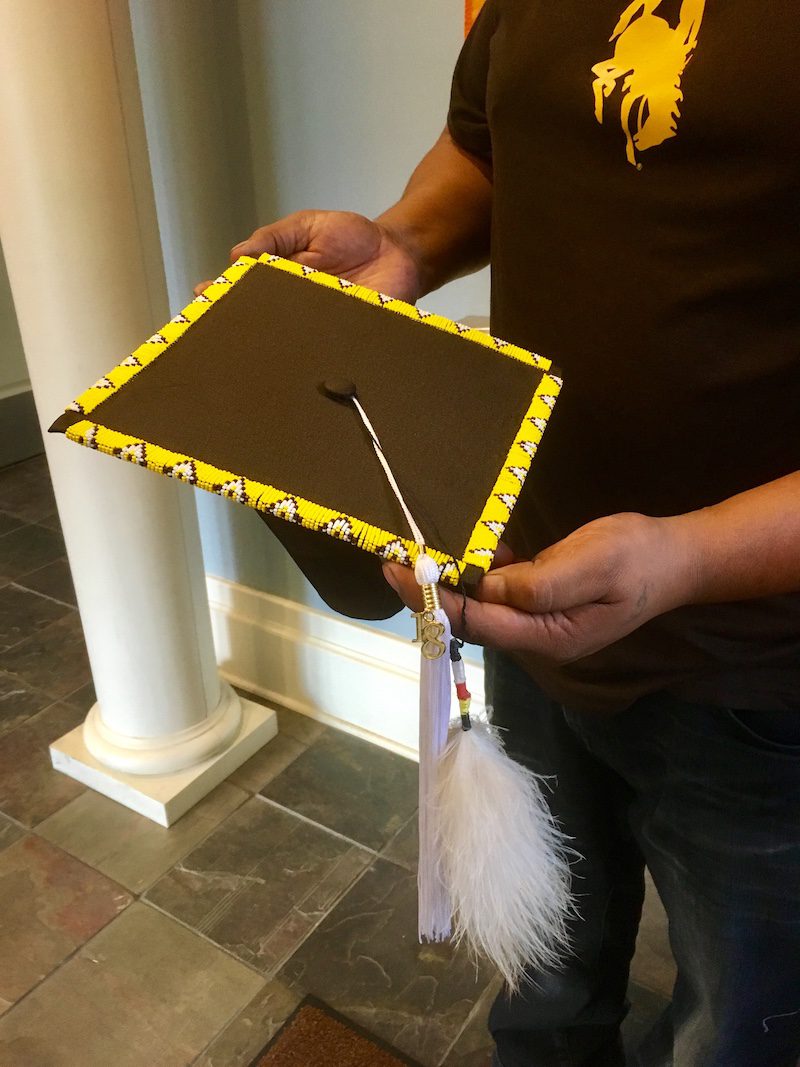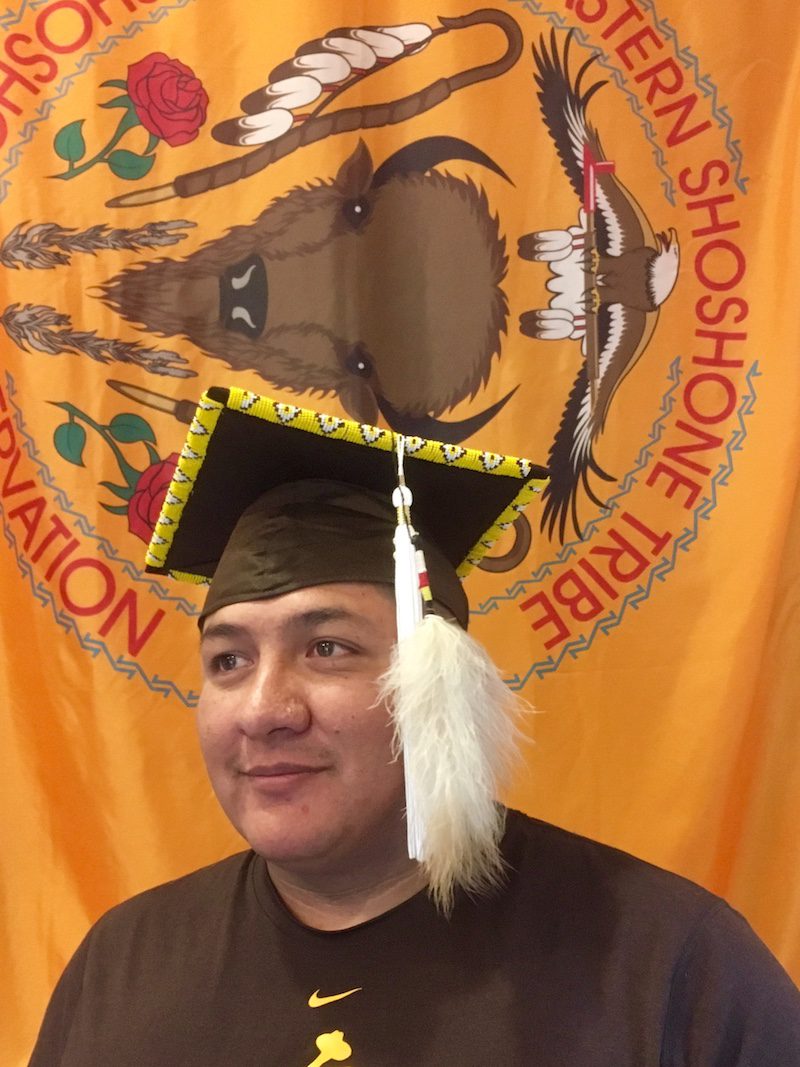 (Taylar Dawn Stagner in front of the new Native American Research Center on the University of Wyoming's campus. Photo Credit: London Homer-Wabeam)
(Taylar Dawn Stagner in front of the new Native American Research Center on the University of Wyoming's campus. Photo Credit: London Homer-Wabeam)
I grew up on the Wind River Reservation, home to the Northern Arapaho and Eastern Shoshone tribes in Wyoming. I’m also a recent graduate of the University of Wyoming. Since stepping on campus, I became aware that there are few Native Americans in higher education. So when I was asked by a professor to do a class presentation about the reservation where I grew up, nervously I agreed.
After my speech, I asked my peers what questions they might have. Slowly, I heard two of my classmates beating on the desks in front of them like a drum, as if they were imitating a Native American drum circle. I watched as they became more confident, until they felt brazen enough to start doing the “Tomahawk Chop.” It’s a baseball chant popularized by the Atlanta Braves, a team that has faced criticism for its appropriation of Native American culture.
I stood at the front of the class while they were chanting. I found it hard to speak up out of embarrassment and rage. I felt as if I was paraded out to be mocked because the professor did little to quell the two classmates and the laughter that ensued. Later that school year I went to the department head to tell them of the situation, to perhaps get some closure or recompense. I was met with an awkward laugh and no promise to do anything about the matter.
I have heard many similar education stories from my Indigenous peers. Professors insinuate that the class is too hard for them. A student is told that she’s doing better than expected considering where she is from. These micro-aggressive blows to our sense of self remind us that we are lucky to be here and should be happy we are in college at all.

The cap was beaded by Mikala SunRhodes for Lee “Giz” Tendor for his graduation. Photo Credit: Taylar Dawn Stagner 
Lee “Giz” Tendor standing in front of the Eastern Shoshone Flag. Photo Credit: Taylar Dawn Stagner
In 2017, only 27 percent of Native Americans had attained an associate’s degree or higher. That’s compared to 54 percent for white students, according to data from the Postsecondary National Policy Institute. And the participation of Native American students in higher education dropped from 23 percent in 2015-16 down to 19 percent in 2016-2017.
My university, in particular, has a fraught relationship with Indigenous peoples from the Wind River Reservation. In 2015, high schoolers on a college visit were detained and searched while shopping at the campus bookstore. In 2017, a group of prospective students were brought to a musical that depicted Native Americans as evil. This treatment is reflected in the enrollment of Native American students, which in a student body of over 12,000, declined from 79 in 2015 down to 64 in 2017.
The University of Wyoming is trying to address this. Training on discrimination and harassment prevention is now mandatory for all university faculty. This training will include education about micro-aggressions and racial bias. The university has also opened a Native American Research Center, where Native American students can gather to study, have meetings, and meet other students. The center is also home to a summer institute for Native American high schoolers, to help them envision college as a part of their future.
While I enjoy the benefits of the Native American Research Center, I wish the rest of the campus was more educated about Native peoples. Many students at the University have not met or been around a Native. And, as a result, Indigenous students bear the brunt of their ignorance. I’ve been called a squaw. I have been asked if I scalp people in my free time. I can’t count the number of times I’ve heard my people referred to as drunks. Yes, these are jokes, but these remarks are made at the expense of a marginalized people.
When I think back on my classmates doing the “Tomahawk Chop,” I wish the professor had called out their racism. The administration should have heard my complaint with more than an uncomfortable laugh. I have worked hard to strengthen my voice, in the face of uncomfortable situations and racist remarks disguised as jokes. It seems ridiculous that this burden falls on me, an Indigenous student, rather than the university administration and faculty. But I push myself to speak up, in attempt to build a world where ridicule for my people isn’t the norm.
This essay was produced in collaboration with Wyoming Public Media.

